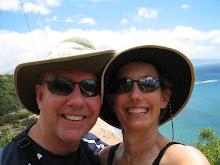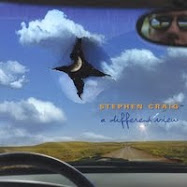Looking back on our experience with the Mountain Gorillas it’s hard for us to believe that we actually considered not going to see them. It’s too expensive and the travel is too difficult were our reasons for contemplating not heading to Rwanda. Yes, it was a major effort to get there and it was one of the more costly excursions of our travel year, and it was also one of the best experiences in our life times!
There are only approximately 750 Mountain Gorillas remaining. Although the population is slowly growing, they remain in danger. Even though they are a huge revenue source for the country, they are still illegally poached and sold to zoos and private collections. And even though the area where they live has been designated park land, they still die because they don’t have enough territory. Sometimes they are forced to go high up in the mountains where the weather is so severe that they die of exposure to cold and wind. It was with mixed emotions when we bought our permits - on the one hand we were supporting the park, the community, and indirectly the Gorillas; on the other hand, we were encroaching on and disturbing these magnificent animals. Are we helping or hurting them? The scale tips a bit more on the helpful side, but not by much.
With our doubts shoved to the back of our mind, on the morning of our trek, we were very excited. For 3 days prior we had been exploring other aspects of the huge Volcanoes National Park, so we were pent up to see the magnificent Mountain Gorillas.
Our driver instructed us to ask the park’s head warden if we could see a specific gorilla troop named Kwitonda. We knew we were breaking gorilla trek protocol, by making our preference known, but took the risk in order to see one of the bigger troops that had an unusually high number of silverbacks (the over 12 year-old males). We were grilled on why we were requesting a specific trek, who we were traveling with, etc. We answered exactly as we were prepped, and were rewarded with being assigned to a gorilla group with three silverbacks, an unusually high number. It didn’t seem possible but our giddiness level went up a notch.
Only 8 tourists are assigned to each gorilla family. We just happened to be the 7th and 8th members of a group made up of 6 gorilla veterinarians from the United States. Gorilla veterinarians!!! With the latest camera technology!! Little did we know that our luck was just beginning. Our new veterinarian friends were trekking this specific gorilla group because it was reported that the dominant silverback had an injury. They were going to make a determination if the injury need intervention. We instantly felt privileged to spend time with this concerned team of docs.
Our luck continued with the local guide that would take us on this expedition. Of course, the veterinarians get the best guide the park has ever had. So Amy and Steve do too! Francoise is not only the park’s most experienced guide, he is also the most animated. He has spent 29 years with the gorillas and was Dian Fossey’s porter back in the early 1980’s (remember the film “Gorillas in the Mist“?).
Francoise has trained all of the other guides in the park and we quickly understood why. He knows the gorillas - their names, ages and personalities. He demonstrated to us how and what they eat by eating it himself. He communicates with the gorillas and showed us his techniques for grunting, hollering, and beating his chest and the ground. He is informative, humorous, caring, and perfect for his job.
We started the trek by scaling the wall separating the local farms from the National Park. We then headed through very thick jungle to where the trackers had indicated ’our’ gorillas were located. The park has gorilla tracking down to a science. Trackers follow each gorilla group until they make their nests for the night. (We found it interesting that gorillas build new nests each and every afternoon.) Then each morning, trackers go to the nesting sight and follow them again. This information is then relayed to each guide and the tourists head in that direction. Although there are no guarantees that you’ll see your assigned troop, the trackers put the odds in your favor.
For an approximate hour we headed up the steep slopes deep into the forest until we……..smelled them! There was the distinct earthy scent of gorilla in the air. As we turned the corner on the trail……
Continued on the next post….














No comments:
Post a Comment